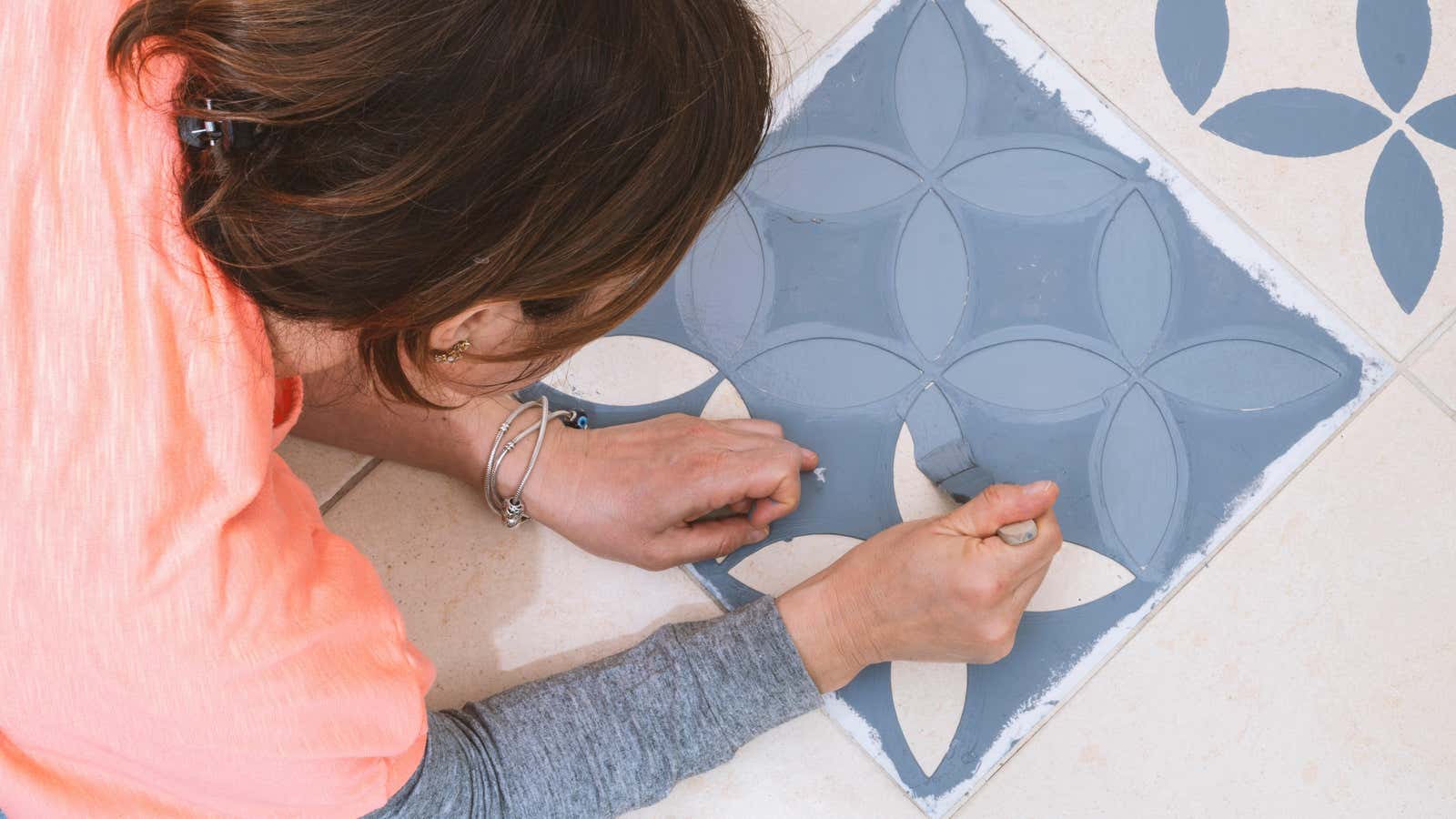Stencil on This Old Concrete Patio

When you step out of the house this spring and look around your outdoor space, you may find that your old concrete patio could do with a little tidying up. If you’re looking to freshen up your patio a bit on a budget, you might consider stenciling. All you need is a few supplies, a couple of helpful tips, and a little time and patience. Here’s how to stencil your concrete patio.
How to prepare a concrete patio for stenciling
For this project you will need:
- Large format stencil
- Large stencil brush
- paint roller
- Exterior paint on concrete in base color and stencil color
- Transparent sealant
- masking tape
- Large container with water and a sponge for cleaning the stencil.
There are many stencil options, and while the traditional approach is to use a faux tile template, you can make this update with any pattern you like.
Now you can start preparing the concrete for painting. Use a strong hose or pressure washer to remove moss, dirt or other debris. If your patio hasn’t been cleaned in a while, you can also try diluting dish soap in water and using a broom or stiff-bristled brush to clean the surface of stubborn dirt. Check the concrete for cracks and use a crack repair kit to repair small cracks and chips.
Once your surface is clean and smooth, use a roller and base color to paint the patio surface using outdoor paint. Depending on which color you choose as your base and how different it is from your original color, it may take two coats to get an even color. Once the entire surface has been painted, allow the base coat to dry overnight.
How to draw a stencil on concrete
The next step is the fun part: starting at the corner, preferably the one farthest from the door, place the stencil along the edge of the concrete and secure it with masking tape. Fill in your pattern using downward strokes with the stencil brush. This helps to avoid showing through the edges of the stencil template. If you haven’t used a stencil brush before, or just need to brush up on your brush skills, practice on a piece of smooth cardboard to get an idea of how your brush and stencil will work.
Repeat your pattern on one edge of the patio for the first row. This will give you a good base to lay out the rest of your template. To evaluate the layout, you can cut out a piece of cardboard or paper the same size as your stencil and use it to evaluate the placement of the stencil. If the surface of your stencil doesn’t fit around the corners or edges, you can tape the part of the stencil that you’re not using to avoid accidentally painting over other surfaces.
Some Tricks to Make Screen Printing Easy
Applying the stencil to the floor can take some time, but there are some things you can do to make the process go more smoothly. First, don’t let dried paint chips build up around the edges of your stencil to make it look crisper – use a bucket or tray of water and a large sponge to periodically wipe excess paint off your stencil to prevent this. You should also rinse your stencil brush from time to time, but be sure to dry your tools thoroughly after cleaning them so you don’t accidentally dilute the paint.
If you have small imperfections or mistakes in your drawing, you can use your base color and a tiny brush to touch it up once the stencil layer is dry.
Once your design is complete, the final step is to use a clear sealant as a top coat so the design won’t wear off from foot traffic or the weather. You should allow surfaces to dry completely before arranging furniture or walking on the patio.